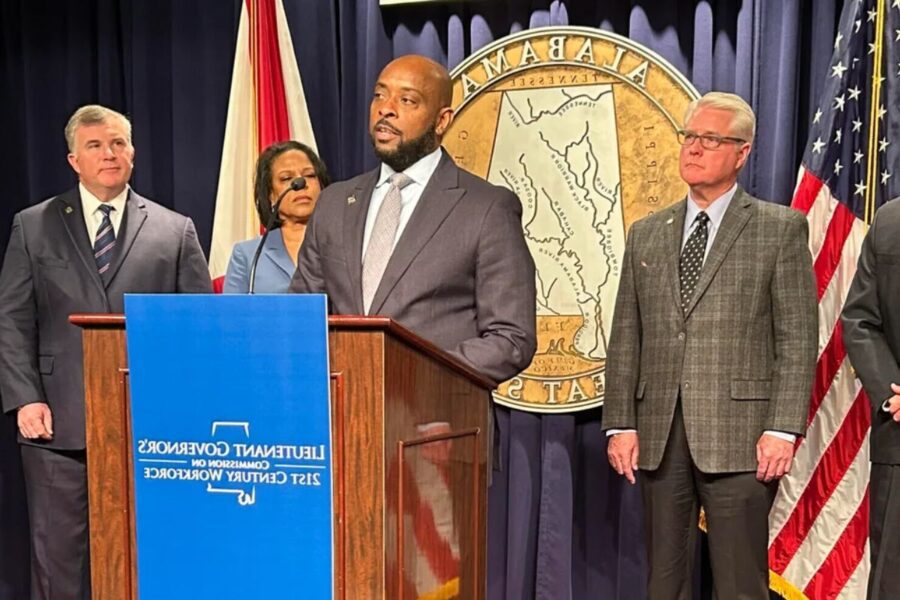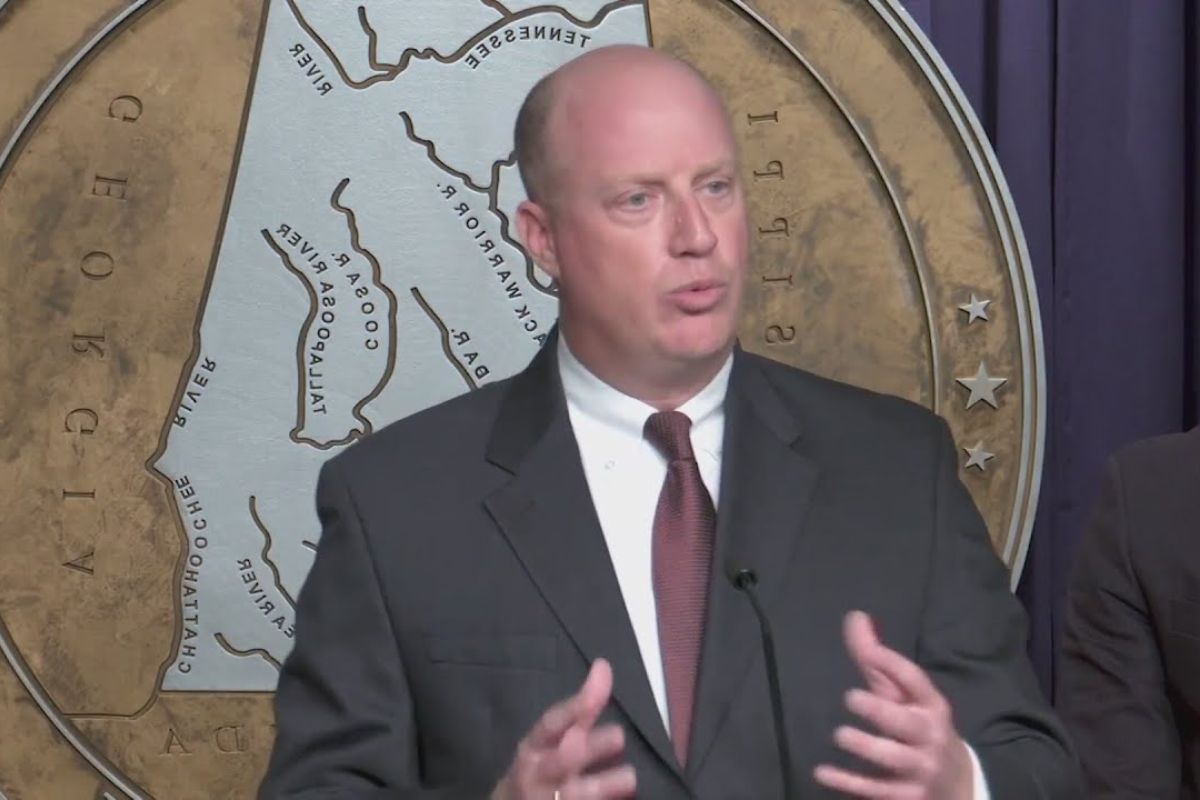Lt. Gov. Ainsworth Plan: Alabama’s Lt. Gov. Ainsworth has unveiled an ambitious workforce development strategy aimed at addressing the diverse challenges faced by the state’s labor market. With a new leadership role as the Cabinet Secretary of Workforce Development, Ainsworth aims to implement comprehensive reforms that support education and affordable housing.
However, legislative action is needed to secure the commitment of state lawmakers. This article provides an informative, concise, and analytical overview of Lt. Gov. Ainsworth’s plan for new workforce development in Alabama.
Key Takeaways
- Lt. Gov. Ainsworth’s workforce development strategy aims to enhance and modernize Alabama’s workforce by adapting to the demands of the 21st-century economy.
- The strategy includes targeted training programs, partnerships with educational institutions and businesses, and the establishment of career pathways aligned with emerging industries.
- The newly created Cabinet Secretary of Workforce Development will play a pivotal leadership role, streamlining state agencies, conducting research and analysis, and collaborating with stakeholders to advise on workforce development policies.
- The plan also includes comprehensive reforms for education, such as support for career and technical education programs, and initiatives to increase the availability of affordable housing options, aiming to create a well-educated workforce and address housing needs.
Alabama Lt. Gov. Unveils Ambitious Workforce Development Strategy
He has unveiled an ambitious workforce development strategy for Alabama. Lt. Gov. Will Ainsworth’s comprehensive plan, implemented through the Lt. Governor’s Commission on 21st Century Workforce, aims to enhance and modernize Alabama’s workforce.
This strategy recognizes the need to adapt to the demands of the 21st-century economy and ensure that Alabama remains competitive on a national and global scale. The commission’s proposals encompass a range of initiatives, including targeted training programs, partnerships with educational institutions and businesses, and the establishment of career pathways that align with emerging industries.
New Leadership Role: Cabinet Secretary of Workforce Development
The newly created Cabinet Secretary of Workforce Development plays a pivotal leadership role in Lt. Gov. Ainsworth’s plan to transform Alabama’s workforce. Here are five key responsibilities of the Cabinet Secretary:
- Streamlining state agencies: The Secretary will work to streamline existing state agencies involved in workforce development to ensure efficiency and effectiveness.
- Understanding workforce needs: The Secretary will conduct thorough research and analysis to gain a deep understanding of the current and future workforce needs in Alabama.
- Collaboration: The Secretary will collaborate with various stakeholders, including educators, employers, and community leaders, to develop strategies that align workforce training with industry demands.
- Advising the governor and legislature: The Secretary will provide expert advice to the governor and legislature on workforce development policies, initiatives, and investments.
- Updating the workforce strategy: The Secretary will regularly update the state’s workforce strategy based on evolving economic trends, technological advancements, and industry demands.

READ MORE: Ainsworth Reed And BCA President Legislators Share Details of Alabama’s Workforce Transformation
Comprehensive Reforms: Support for Education and Affordable Housing
As part of Lt. Gov. Ainsworth’s comprehensive plan for enhancing and modernizing Alabama’s workforce, the focus now shifts to comprehensive reforms that include support for education and affordable housing.
Recognizing the importance of a well-educated workforce, the plan emphasizes support for career and technical education programs. By investing in these programs, Alabama aims to equip its citizens with the skills and knowledge needed to succeed in the 21st century job market.
Additionally, the plan introduces a childcare tax credit to alleviate the financial burden on working families and promote access to quality childcare.
In order to ensure that Alabamians have access to affordable housing, the plan also includes initiatives aimed at increasing the availability of affordable housing options.
These comprehensive reforms aim to create a workforce that is prepared for the future while also addressing the housing needs of Alabama’s citizens.
Legislative Action Needed: Commitment from State Lawmakers
State lawmakers express their commitment to shepherding proposed legislative reforms for workforce development in Alabama. These reforms, which include the creation of the cabinet secretary position, childcare tax credit, and support for career programs, require legislative action for implementation.
Lawmakers, such as Sen. Pro Tem Greg Reed, understand the importance of these reforms in addressing the state’s workforce needs and are dedicated to ensuring their passage. To demonstrate their commitment, lawmakers have outlined key actions they will take:
- Engage in bipartisan discussions to build consensus on the proposed reforms.
- Develop comprehensive legislation that addresses the specific needs of Alabama’s workforce.
- Collaborate with industry leaders, educators, and community organizations to gather input and refine the proposed reforms.
- Advocate for the necessary funding and resources to support the implementation of these reforms.
- Regularly communicate with constituents to keep them informed about the progress of the proposed reforms.
Addressing Diverse Workforce Challenges
The comprehensive approach to workforce development in Alabama includes addressing diverse workforce challenges by implementing strategies to enhance skills training and promote inclusivity. Recognizing that a skilled and diverse workforce is crucial for economic growth and social well-being, the Lt. Governor’s plan aims to create an environment that supports the needs of all individuals in the workforce.
This includes initiatives to address disparities in education and training opportunities, as well as programs to promote diversity and inclusion in the workplace. By fostering an inclusive environment, Alabama can attract and retain a diverse pool of talent, which will contribute to innovation and productivity. The following table illustrates some of the challenges faced by a diverse workforce and the corresponding strategies to address them:
| Workforce Challenge | Strategies to Address |
|---|---|
| Disparities in education and training opportunities | – Increase access to quality education and training programs for underrepresented groups- Provide scholarships and grants for individuals from disadvantaged backgrounds |
| Lack of diversity and inclusion in the workplace | – Implement diversity and inclusion training programs- Establish diversity and inclusion committees to promote equal opportunities for all employees |
| Language and cultural barriers | – Provide language and cultural competency training for employers and employees- Foster a welcoming and inclusive environment that values diversity |
| Bias and discrimination | – Implement policies and procedures to prevent and address workplace discrimination- Raise awareness and promote inclusive practices through education and training |

Conclusion Of Lt. Gov. Ainsworth Plan New Workforce Development
The Lt. Gov. of Alabama has presented an ambitious workforce development strategy that includes the creation of a new leadership role, the Cabinet Secretary of Workforce Development.
This comprehensive plan aims to address diverse workforce challenges by providing support for education and affordable housing.
However, its success will depend on the commitment of state lawmakers to take legislative action.
Overall, this strategy shows promise in improving Alabama’s workforce and economic growth.
Our Reader’s Queries
What is Alabama workforce development?
The Workforce Development Division is committed to enhancing Alabama’s public workforce system. Its focus is on facilitating the placement of Alabamians into high-quality jobs and careers while assisting employers in recruiting and retaining skilled workers essential for sustaining and expanding their operations.

